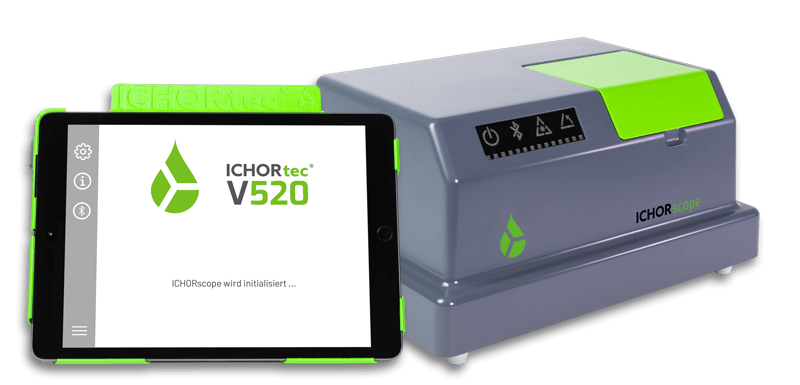FMB® – Method
“ICHORscope” uses biophysical interactions between DNA, RNA and protein

Change of energy in molecules exposes their identity
Atomic compounds, whether they exist as DNA, RNA or proteins, are characterised by strong or weak binding energies with interactions that can repel or attract a compound.
Energies and energy shifts are expressed in electron-volts.

Platform for the detection of viruses and proteins
The ICHORtec system consists of a device and a test tube that contains a probe. The probe reacts specifically with a target molecule, e.g. a nucleic acid sequence (RNA), or a carcinogenic biomarker. If the intermolecular bonds fit, e.g. between antigen and antibody (“lock and key principle”), there is also a shift in the binding energy.
In the case of an RNA molecule to be examined, e.g. viral RNA, a sequence-specific hybridisation and an exchange of energy occurs, which is detected and interpreted by “microfluorescence spectroscopy”.
The method is based on a molecular interaction, as binding between a biomolecule and a fluorescent marker leads to a reduction in energy. The energy reduction can be evaluated qualitatively and quantitatively. In future, this molecular correlation will be referred to as “fluorimetry of molecular binding – FMB”.
The outstanding features of the FMB® method are high sensitivity (Limit of Detection – LOD), high differentiation, and fast detection of the energy signature – within minutes. In principle, the method is also suitable for the detection of other proteins. The exchange of energy between individual molecules can also be transferred to other areas of application, such as biomarkers and antibodies.
Data to date show additional clinical benefits of the FMB® method, which are demonstrated by the improved limit of detection (LoD), sensitivity and specificity. The detection of SARS-CoV-2 viruses has already been demonstrated in comparison with the PCR technique.
The platform can be put in place as a “point of care” or “point of use” solution.